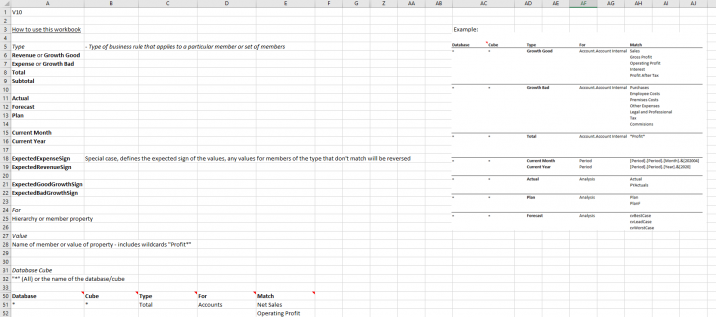Difference between revisions of "Business Rules"
(Created page with "Business rules map members in your data to their type, determining how they should be plotted and formatted in Business Charts. This is inline with the IBCS rules for unif...") |
|||
| Line 21: | Line 21: | ||
[[File:Business-Rules-Insert-Dialog.png|center]] | [[File:Business-Rules-Insert-Dialog.png|center]] | ||
| − | == | + | ==Business Rules Sheet== |
| + | |||
| + | [[File:Business-Rules-Sheet-1.png|center|716px]] | ||
| + | [[File:Business-Rules-Sheet-2.png|center|716px]] | ||
Revision as of 15:49, 7 July 2020
Business rules map members in your data to their type, determining how they should be plotted and formatted in Business Charts. This is inline with the IBCS rules for unifying the visualisation of scenarios.
- Actuals are formatted in a dark grey
- Expenses are plotted in the negative direction
- Previous year fill colour is a lighter grey
- Plan values are outlined
- Forecast values are hatched (diagonal fill pattern)
Creating Business Rules
Business rules are added from the Business Chart dropdown menu from the XLCubed ribbon.
This opens a dialog allowing you to select which rules apply to which members. The first time you add a rule, a new sheet called XLCubedBusinessRules will be added to the workbook. Any subsequent additions will be made to the same sheet.
- Connection: select which connection this rule applies to.
- Rule: select which rule to create.
- Applies to connection: apply the rule to just the cube, any cube in the database, or any match.
- Hierarchy: select which hierarchy this rule will apply to.
- Members: drag and drop members into the right plan to add them to the current rule. Specify whether the unique name or caption should be used on the Business Rules sheet.



